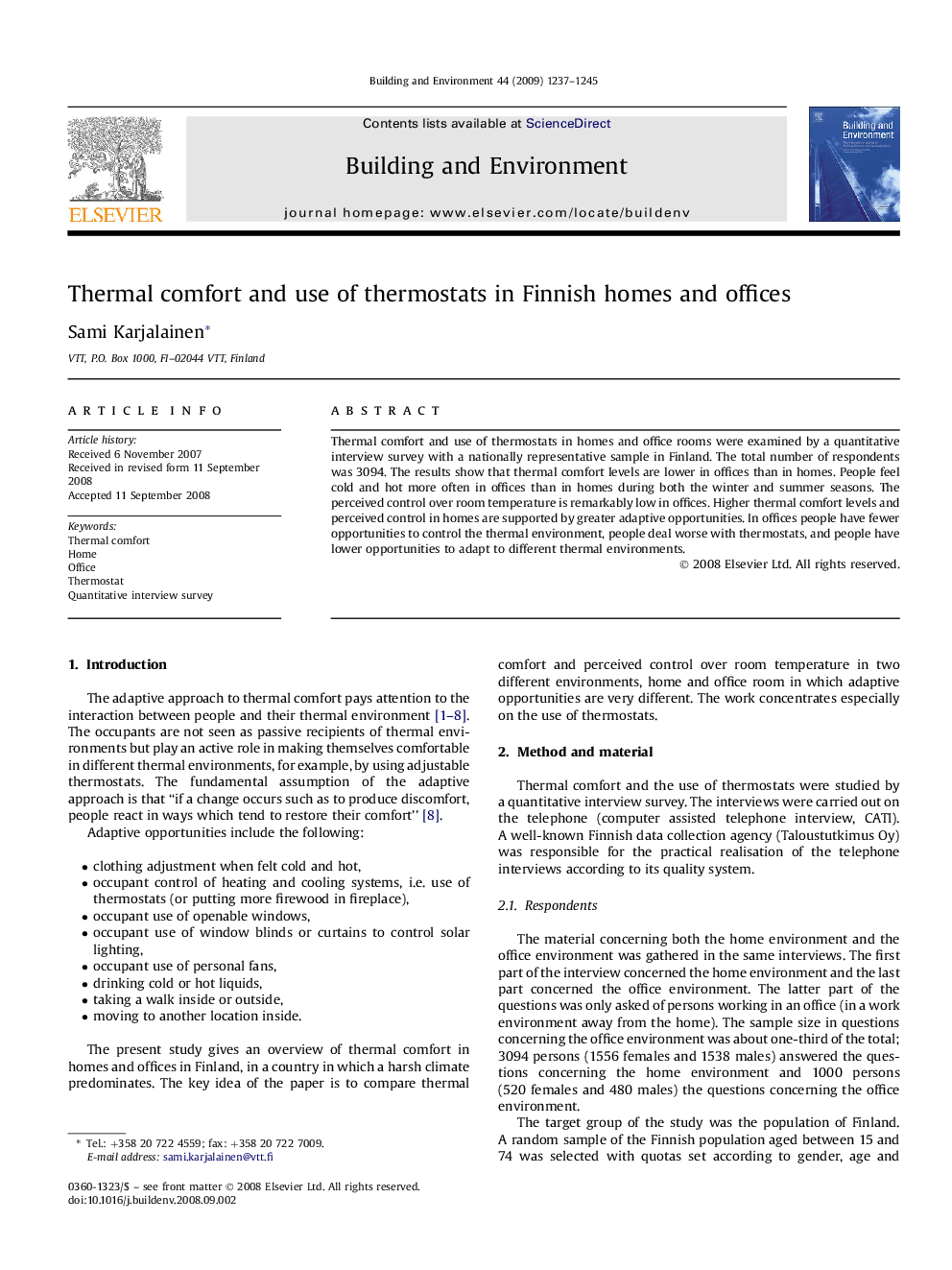| Article ID | Journal | Published Year | Pages | File Type |
|---|---|---|---|---|
| 249567 | Building and Environment | 2009 | 9 Pages |
Thermal comfort and use of thermostats in homes and office rooms were examined by a quantitative interview survey with a nationally representative sample in Finland. The total number of respondents was 3094. The results show that thermal comfort levels are lower in offices than in homes. People feel cold and hot more often in offices than in homes during both the winter and summer seasons. The perceived control over room temperature is remarkably low in offices. Higher thermal comfort levels and perceived control in homes are supported by greater adaptive opportunities. In offices people have fewer opportunities to control the thermal environment, people deal worse with thermostats, and people have lower opportunities to adapt to different thermal environments.
